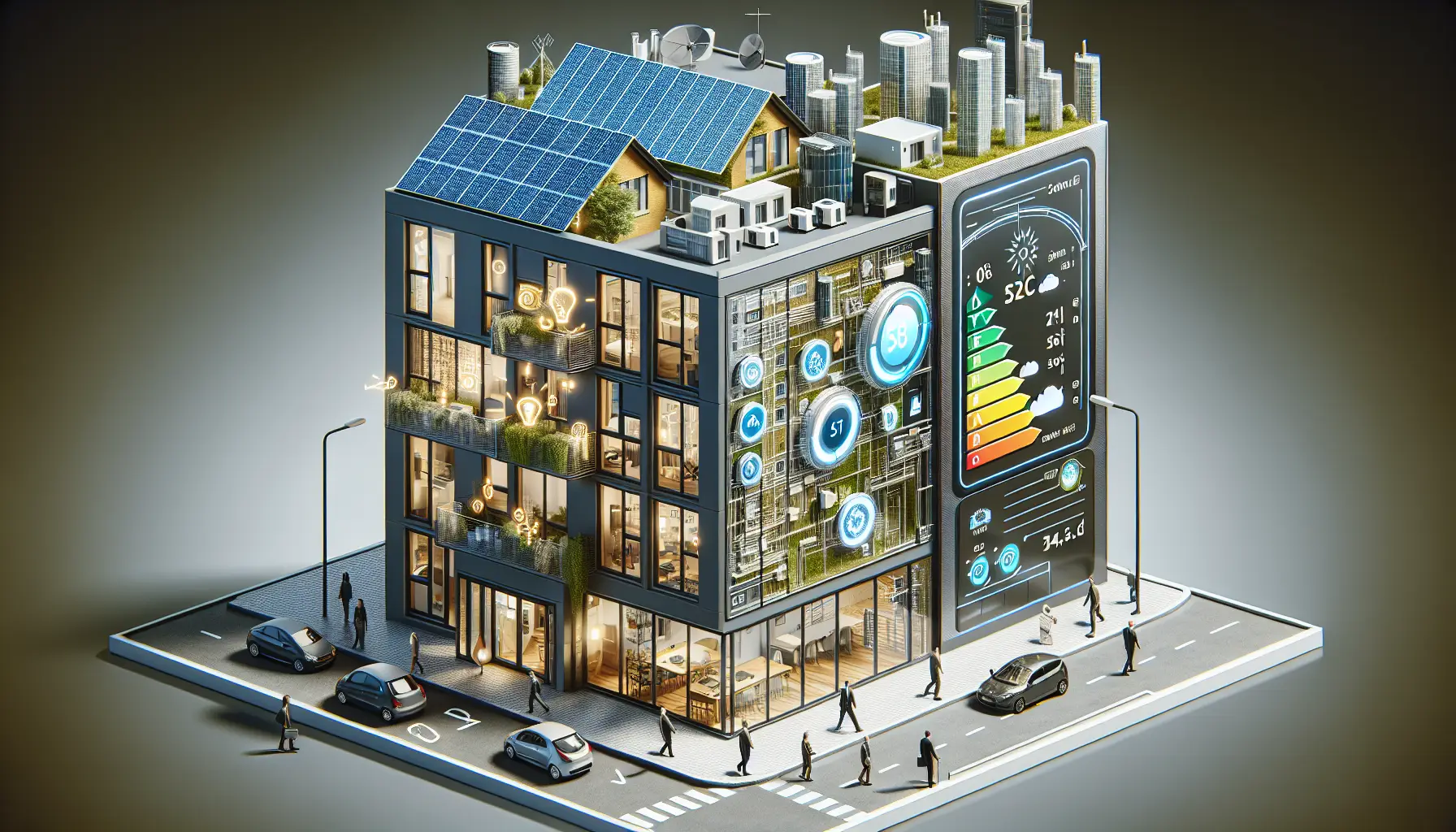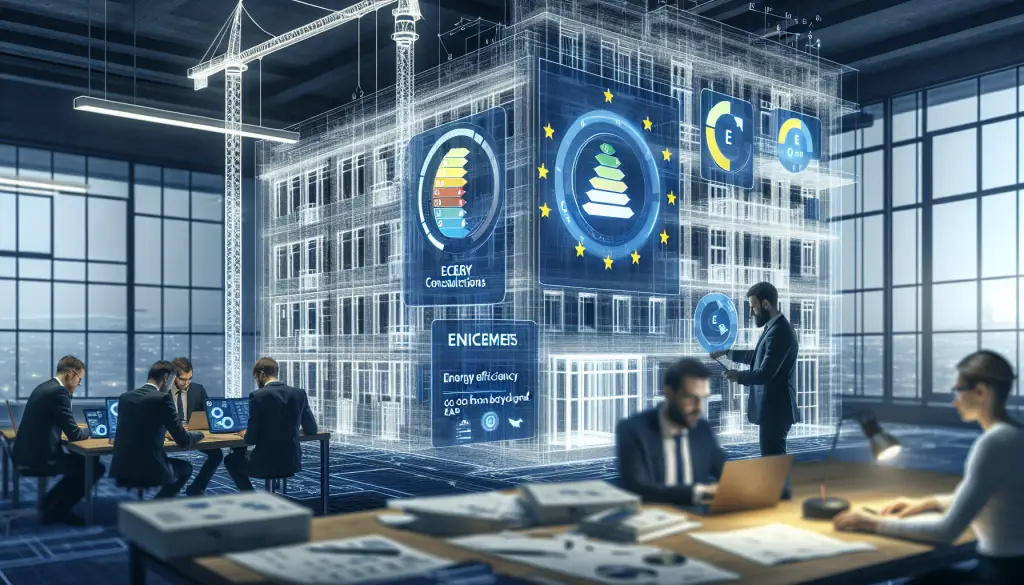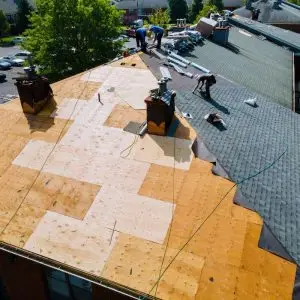Understanding the Basics of Energy Efficiency Beyond SAP Calculations
The Standard Assessment Procedure (SAP) is a vital tool used to measure the energy performance of buildings in the UK. However, merely adhering to SAP calculations does not guarantee maximum energy efficiency. At Ratio Seven, we believe that achieving optimal energy efficiency requires a multi-faceted approach that goes beyond basic SAP assessments.
Innovative Insulation Techniques
While SAP calculations consider standard insulation measures, there are numerous innovative techniques to enhance building insulation:
- Spray Foam Insulation: This method fills gaps and seams more effectively than traditional insulation, providing an airtight seal.
- Vacuum Insulated Panels (VIPs): Known for their exceptional thermal performance, VIPs are ideal for space-constrained areas.
- Green Roofs: Besides improving insulation, green roofs offer added benefits, such as stormwater management and biodiversity support.
Advanced Glazing Systems
Windows play a crucial role in a building’s energy efficiency. Advanced glazing systems can significantly reduce energy loss:
- Triple Glazing: Offers better thermal performance compared to double glazing, thus retaining heat more efficiently.
- Low-E Glass: Coated with a thin, transparent layer that reflects heat back into the room while allowing natural light to pass through.
- Gas-Filled Windows: Filled with gases like argon or krypton, these windows offer better insulation than air-filled windows.
Effective Air Sealing
Air leakage can significantly undermine a building’s energy efficiency. Proper air sealing techniques go beyond what is covered in SAP calculations:
- Blower Door Testing: Identifies leaks through a pressure test and helps in sealing them effectively.
- Weather Stripping: Applying weather stripping around doors and windows can greatly reduce air leaks.
- Caulking: Seal cracks and gaps around vents, pipes, and electrical outlets to prevent air leakage.
Optimising Heating, Ventilation, and Air Conditioning (HVAC) Systems
Efficient HVAC systems are crucial for maintaining energy efficiency in buildings. Consider the following strategies:
- Smart Thermostats: These devices automatically adjust heating and cooling settings to optimise energy use.
- Regular Maintenance: Ensures that HVAC systems are running efficiently and helps identify potential issues early.
- Heat Recovery Ventilation: Recovers heat from outgoing air to warm incoming air, reducing heating demands.
Adopting Renewable Energy Sources
Renewable energy systems can drastically improve energy efficiency beyond SAP calculations:
- Solar Panels: Convert sunlight into electricity, reducing dependence on grid power.
- Wind Turbines: Ideal for areas with consistent wind, these turbines generate electricity without emitting CO2.
- Ground Source Heat Pumps: Utilises the earth’s constant temperature to heat and cool buildings efficiently.
Sustainable Building Materials
Choosing sustainable building materials can have a lasting impact on energy efficiency:
- Recycled Steel: Reduces the need for raw materials and energy-intensive manufacturing processes.
- Bamboo: A rapidly renewable resource, bamboo offers excellent insulation properties.
- Hempcrete: A natural, insulating material that also captures carbon dioxide.
Behavioural Changes and User Education
The habits of building occupants can significantly influence energy efficiency. Educating users on best practices can create a notable difference:
- Energy Audits: Conduct regular audits to identify areas for improvement.
- Monitor and Control Energy Use: Use energy management systems to track and control energy usage in real-time.
- Promote Energy-Saving Habits: Encourage simple practices like turning off lights when not in use, and using energy-efficient appliances.

FAQs About Energy Efficiency Beyond SAP Calculations
What is the Standard Assessment Procedure (SAP)?
The Standard Assessment Procedure (SAP) is a method used by the UK government to assess and compare the energy and environmental performance of homes. It measures aspects such as energy consumption, heat loss, and CO2 emissions. Although SAP provides a numerical rating for buildings, it primarily focuses on compliance and building regulations rather than maximising energy efficiency.
Why should we go beyond SAP calculations for energy efficiency?
SAP calculations are essential for regulatory compliance but often do not capture all the techniques and technologies available for optimising energy efficiency. By going beyond SAP, we can achieve better thermal performance, reduce energy consumption, and make use of innovative technologies and sustainable materials, ultimately leading to more energy-efficient buildings.
How can Ratio Seven help in maximising energy efficiency beyond SAP calculations?
At Ratio Seven, we specialise in a holistic approach to energy efficiency. From employing advanced insulation techniques and optimising HVAC systems to integrating renewable energy sources and sustainable materials, we take a comprehensive approach to ensure maximum energy efficiency. Our expertise extends beyond mere compliance to delivering genuinely efficient, comfortable, and sustainable buildings.
Energy Efficiency Summary
In summary, while SAP calculations are essential for meeting regulatory requirements, they are just the starting point for achieving true energy efficiency. By adopting advanced insulation techniques, innovative glazing, effective air sealing, optimised HVAC systems, renewable energy sources, sustainable materials, and user education, it is possible to take energy efficiency to the next level. At Ratio Seven, we are committed to helping you achieve maximum energy efficiency, going beyond the basics to create sustainable, energy-efficient buildings.




